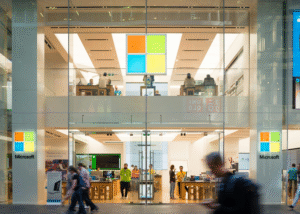London commuters faced a tough day as a fire on the train tracks near Brockley, in south-east London, caused major chaos. The fire broke out on Tuesday morning, bringing several train services to a standstill and disrupting travel across various parts of the city. Many travelers who rely on the trains to get to work or move around the city found themselves stuck, delayed, or rerouted due to this unexpected incident.
What Happened?
The fire, which started near the tracks, damaged important cables that provide power to the railway system. These damaged cables meant that trains could no longer operate normally between key stations like London Bridge and Crystal Palace. Network Rail, the organization responsible for the train tracks and signals, quickly warned that this would cause heavy disruptions throughout the day.

The incident specifically affected London Overground services, which were forced to operate on a much smaller scale. Trains on the Overground line were only running between New Cross Gate and Highbury & Islington, leaving many commuters stranded or looking for alternative routes.
More Chaos Across London
As if the fire wasn’t enough, other train lines were also affected by additional problems on the same day. Southern and Thameslink, two major train operators, also experienced widespread cancellations and delays. Many of their trains, which usually run through the affected area, had to be diverted to other stations or canceled altogether. Some services were rerouted to London Victoria instead of London Bridge, while others simply couldn’t run.
This wasn’t the only trouble affecting London’s rail system. Elsewhere, a tragic incident involving a casualty on the tracks between Swindon and Didcot Parkway caused even more delays. This particular incident affected trains traveling to and from Paddington Station, which is one of London’s busiest transport hubs. Travelers heading to destinations in the South West of England and Wales, including major cities like Cardiff, Bristol, and Plymouth, faced delays of up to 90 minutes as a result.
What the Train Operators Say
Both Thameslink and Southern made announcements to inform customers about the disruptions. In a statement, they explained that the fire near Brockley had severely damaged the cables along the railway line, leading to multiple signal failures. This made it impossible to run their regular services between Norwood Junction and London Bridge. The companies also mentioned that while firefighters had managed to control the fire, Network Rail engineers were working to repair the damaged equipment. However, full services could not resume until extensive testing ensured the safety and functionality of the repaired systems.
The operators also warned that they would not be able to run a normal service throughout the day. Many trains would either be canceled, delayed, or rerouted until the situation was fully resolved.

How the Fire Affected Services
Here’s a quick breakdown of the key disruptions caused by the fire:
- London Overground: Services were limited to running between New Cross Gate and Highbury & Islington. No trains were able to pass through the affected areas, meaning stations between Sydenham and New Cross Gate were cut off.
- Southern Rail: Trains from London Bridge were significantly disrupted. Some services between Uckfield and London Bridge were only able to run as far as East Croydon, while others were completely canceled. Trains between Tattenham Corner/Caterham and London Bridge were diverted via alternative routes, avoiding the damaged sections of the line.
- Thameslink: Several Thameslink services were either canceled or rerouted. For example, trains running between Brighton and Bedford were diverted away from London Bridge, with some services instead traveling through Blackfriars. Other Thameslink trains, such as those between Horsham and Peterborough, were also affected.
In addition to these changes, certain Thameslink trains between East Grinstead and Bedford were completely canceled, leaving commuters searching for alternative ways to reach their destinations.
What Should Passengers Do?
Passengers who rely on these train services were advised to check for updates regularly throughout the day. Both Network Rail and the affected train operators posted frequent updates on social media and through their websites, helping travelers stay informed about the situation.











